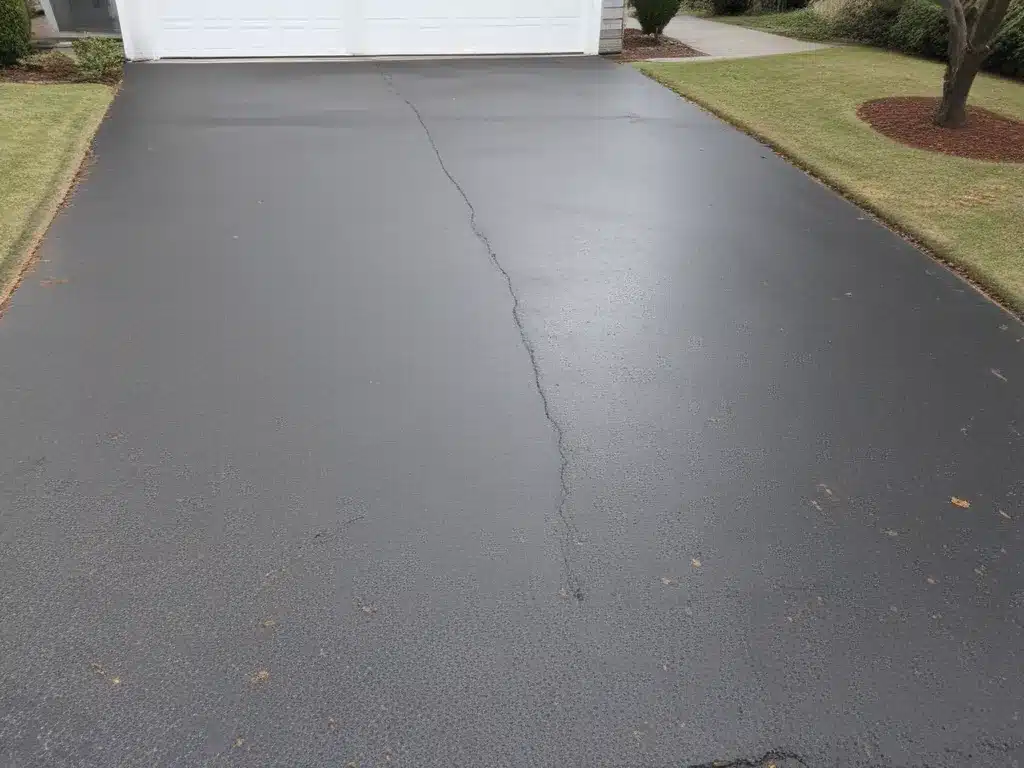Introduction
H2: What is Driveway Oil Removal?
Driveway oil removal is the process of eliminating oil stains and spills from driveways, ensuring a clean and well-maintained appearance. These stains can occur due to leaks from vehicles, spills during oil changes, or other accidental incidents. Left unaddressed, oil stains can become unsightly and potentially damaging to the driveway surface.
H2: Why is Driveway Oil Removal Important?
Removing oil stains from driveways is crucial for several reasons. Firstly, it enhances the aesthetic appeal of your property, creating a welcoming and well-groomed environment. Secondly, oil stains can attract dirt and debris, making the driveway harder to clean over time. Additionally, some types of driveway materials, such as concrete or pavers, can be degraded by prolonged exposure to oil, leading to discoloration, cracking, or other forms of damage.
Preparing for Driveway Oil Removal
H2: Identifying the Type of Driveway Surface
Before attempting to remove oil stains, it is essential to identify the type of driveway surface you are dealing with. Different surfaces may require different cleaning methods and solutions. Common driveway surfaces include concrete, asphalt, pavers, and brick.
H2: Gathering the Necessary Supplies
To effectively remove oil stains from your driveway, you will need to gather the appropriate supplies. These may include:
- Absorbent materials (e.g., cat litter, sawdust, or clay-based products)
- Degreasing agents or specialized oil stain removers
- Stiff-bristled brushes or scrub pads
- Hose or pressure washer
- Protective equipment (e.g., gloves, safety glasses)
Oil Stain Removal Methods
H2: Using Absorbent Materials
For fresh oil spills or leaks, acting quickly is crucial. One effective method is to apply an absorbent material, such as cat litter, sawdust, or a clay-based product, over the affected area. These materials will help soak up the oil, making it easier to remove later.
H2: Applying Degreasing Agents or Specialized Removers
For stubborn or older oil stains, you may need to use a degreasing agent or a specialized oil stain remover. These products are formulated to break down and lift the oil from the driveway surface. Follow the manufacturer’s instructions carefully when using these products, and be sure to test them in an inconspicuous area first to ensure they won’t damage your driveway.
H2: Scrubbing and Pressure Washing
Once you have applied the appropriate cleaning solution, it’s time to scrub the stained area. Use a stiff-bristled brush or scrub pad to agitate the solution and help lift the oil from the surface. For larger or more stubborn stains, you may need to use a pressure washer. Be cautious when using a pressure washer, as excessive pressure can damage some driveway surfaces.
Advanced Techniques and Professional Services
H2: Using Poultice or Absorbent Powders
In some cases, traditional cleaning methods may not be sufficient to remove deeply embedded oil stains. In these situations, you may need to employ more advanced techniques, such as using a poultice or absorbent powders. These products are designed to draw out the oil from the porous surfaces, leaving the driveway clean and stain-free.
H2: Hiring Professional Driveway Cleaning Services
If you are faced with particularly stubborn or extensive oil stains, or if you prefer to leave the task to professionals, consider hiring a professional driveway cleaning service. These companies have specialized equipment and expertise in dealing with various types of stains and driveway surfaces, ensuring optimal results.
One reputable company offering professional biohazard cleaning services, including oil spill cleanup, is Adam Cleaning. Their team of trained technicians utilizes advanced cleaning methods and eco-friendly solutions to restore driveways and other surfaces to their pristine condition.
Maintenance and Prevention
H2: Regular Driveway Cleaning and Sealing
To maintain a clean and oil-free driveway, it is recommended to establish a regular cleaning routine. This can involve sweeping or blowing away debris, followed by a thorough washing with a suitable cleaner. Additionally, consider sealing your driveway periodically to create a protective barrier against future stains and spills.
H2: Preventing Future Oil Leaks and Spills
While accidents can happen, there are steps you can take to minimize the risk of future oil leaks and spills on your driveway. These include:
- Regularly checking and maintaining your vehicles to prevent leaks
- Using drip pans or absorbent mats when changing oil or performing maintenance tasks
- Promptly cleaning up any spills or leaks as soon as they occur
By following these preventive measures, you can reduce the likelihood of needing to remove oil stains from your driveway in the future.
Conclusion
H2: The Importance of a Well-Maintained Driveway
A clean and well-maintained driveway not only enhances the curb appeal of your property but also protects the integrity of the surface from potential damage. By addressing oil stains promptly and employing the appropriate removal methods, you can ensure that your driveway remains a welcoming and visually appealing feature of your home or business.
Remember, if you encounter particularly challenging or extensive oil stains, don’t hesitate to seek professional assistance from experienced driveway cleaning services like Adam Cleaning. Their expertise and specialized equipment can help restore your driveway to pristine condition, saving you time and effort in the long run.







